 30.12°C Kathmandu
30.12°C KathmanduNational
Government importing 20,000 oxygen cylinders and 100 ventilators from China
Some of the cylinders could arrive as early as next week, Health Ministry says.
Prithvi Man Shrestha
Amid record rise in daily Covid-19 deaths and infections, the government has initiated the process to import 20,000 oxygen cylinders and 100 ventilators from China fearing shortages like that in India.
As the situation is getting increasingly grim with hospitals overwhelmed with Covid-19 patients and majority of them requiring oxygen, the government started the process to import more cylinders and ventilators from China. After deaths mounted in India following an acute shortage of oxygen, the government of Nepal started worrying about a potential oxygen crisis in Nepal.
The Health Ministry on Tuesday reported a record high 55 deaths and 7,587 infections. Additionally, 73 people tested positive for coronavirus through antigen tests.
“We are working to import oxygen cylinders from China through a government-to-government agreement,” said Jageshwar Gautam, spokesperson at the Ministry of Health and Population. “We are now discussing whether to send our own plane for bringing the cylinders.”
He said some of the oxygen cylinders could arrive next week.
According to the officials at the health and finance ministries, at least a portion of the oxygen cylinders and ventilators will be received in grant from the northern neighbour.
During a joint video conference on April 27 among foreign ministers of China, Afghanistan, Bangladesh, Nepal, Pakistan and Sri Lanka, Chinese State Councilor and Foreign Minister Wang Yi had offered to help South Asian countries in acquiring COVID-19 vaccines and support the countries with other medical logistics from the China-South Asia emergency Supplies Reserves.
During the meeting, China had agreed to provide Nepal "with an additional
grant of medical equipment and materials equivalent to 5 million RMB (Rs92 million) to complement the national efforts in the fight against Covid-19, according to the Foreign Ministry statement.
“Some oxygen cylinders and ventilators will arrive in Nepal under the grant pledged by China during the video conference late last month,” a senior official of the Health Ministry told the Post on condition of anonymity.
But, all the oxygen cylinders that the government is planning to bring from China will not be brought in a single lot. Officials at the Health Ministry said that the government plans to bring 2,000 oxygen cylinders and all 100 ventilators on chartered flights in the first phase.
“We are also holding discussions to bring the remaining cylinders by sea, but no formal decision has been taken yet,” said an official of the ministry.
But, oxygen manufacturers who frequently bring oxygen cylinders by sea say that it would take at least around two months to bring cylinders from the sea route that would be too late given the emerging crisis in the country.
According to government officials, they have already sent the specifications of oxygen cylinders to China.
Nepali officials and private sector manufacturers of oxygen have been maintaining that the country is yet to see an oxygen shortage like that of India but they are concerned about a potential shortage due to the recent record surges in Covid-19 cases.
After the oxygen manufacturers notified the government that oxygen cylinders rather than oxygen itself could be in short supply in the event of the Covid-19 situation getting worse, the government stepped up to import the cylinders.
According to the Oxygen Industries Association, a grouping of Kathmandu Valley-based suppliers, they have a production capacity of 8,000 cylinders per day and the current demand for oxygen in the Valley’s hospitals is around 6,000 cylinders.
There are eight oxygen factories in Kathmandu which have around 70,000-80,000 cylinders, according to the association.
Officials and doctors said most of the Valley’s hospitals don’t have their own oxygen plants or storages and rely on suppliers. In view of the growing demand for the life-saving gas, the manufacturers have lately stopped supplying to businesses while individuals and households must produce doctor’s prescription to purchase oxygen.
Prime Minister KP Sharma Oli in his address to the nation on Monday said the government has banned the supply of oxygen for industrial purposes to ensure that the hospitals do not face shortages. On the other hand, the government has announced waiver of customs duty, value added tax and excise duty on the import of oxygen cylinders.
“Had the government asked us to bring the cylinders five-six months ago, there would be little risk of oxygen shortage in the country,” Narayan Timilsina, general secretary of Oxygen Industries Association, told the Post last week.





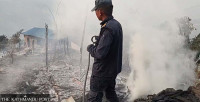

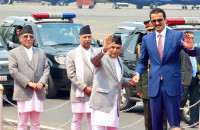

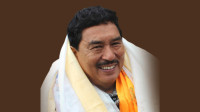
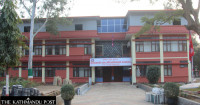
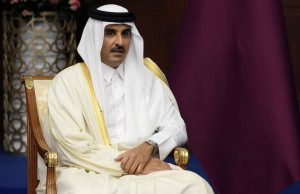

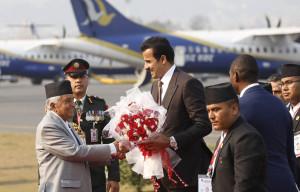
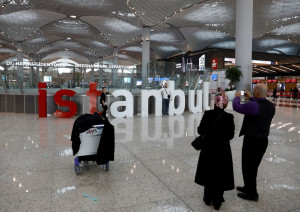
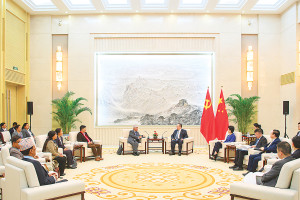
.jpg&w=300&height=200)



